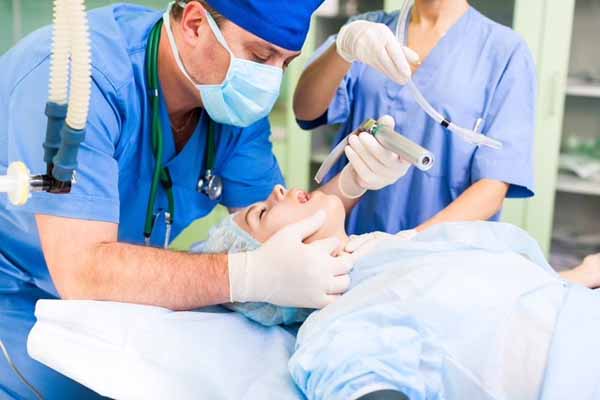
Saying the state “must be guided by data and by doctors,” Gov. Greg Abbott loosened coronavirus-prompted restrictions on surgeries and procedures as part of three executive orders issued Friday to start bringing Texas back to economic normalcy.
TMA President David C. Fleeger, MD, issued a statement saying Texas physicians were pleased that the governor was taking a “gradual science-based approach” to the recovery.
The governor announced the steps among other major tenets of the executive orders, which included appointing four physicians to a newly created “Strike Force to Open Texas;” authorizing retail businesses to begin to-go orders on April 24; and the closing of schools for the rest of the 2019-20 academic year.
“Because of the efforts by everyone to slow the spread, we’re now beginning to see glimmers that the worst of COVID-19 may soon be behind us,” Governor Abbott said at a news conference. “The number of infections and hospitalizations is beginning to level off. We have a steady supply of PPE [personal protective equipment], like facemasks. We have plenty of hospital rooms and ventilators to treat our fellow Texans.
“Now the deaths, while far too high, will not come close to the early dire predictions. And I’ll add this: Texas has the second-most recoveries from COVID-19 of all states in America. We have demonstrated that we can corral the coronavirus.”
The governor’s previous executive order restricting surgeries deemed “not medically necessary,” which originally ran through April 21, will now run through May 8. However, beginning at 11:59 pm on Tuesday, exceptions to the order will allow:
- Any procedure that, if performed in accordance with the commonly accepted standard of clinical practice, would not deplete the hospital capacity or the PPE needed to cope with the COVID-19 disaster; or
- Any surgery or procedure in a licensed health care facility that has certified with the Texas Health and Human Services Commission that it will reserve at least 25% of its hospital capacity for treating COVID-19 patients, accounting for their range of clinical severity; and that the facility will not request PPE from any public source during the COVID-19 disaster.
“Many doctors and nurses have been sidelined because of the need to postpone non-essential medical procedures. That was done to free up hospital capacity and the PPE needed to treat COVID-19 patients. … It is time to allow those doctors and nurses to return to work,” Governor Abbott said at Friday’s news conference. “However, it must be done in ways to ensure that we will be able to treat COVID-19 patients.”
Loosening the restrictions “will allow doctors to diagnose and treat more medical conditions without needing to get an exception. Just one example of this would be a diagnostic test for a suspected cancer,” he said.
Dr. Fleeger said many Texas physicians have been hoping for such a change, which TMA has lobbied for.
“The health of patients not affected by COVID-19 is an overwhelming concern,” Dr. Fleeger said. “Telemedicine has been an important tool, but it does not substitute for hands-on examinations of growing children or diagnosing complex health problems. Many of our patients have put off desperately needed surgeries or procedures that can no longer be delayed.
“We cannot throw the switch overnight, however, or we risk a rapid return of a terribly contagious disease that has not yet reached its peak and is still killing dozens of Texans every day.”
Despite Governor Abbott’s claim at the news conference of a “solid supply chain of PPE” in the state, Dr. Fleeger said protective equipment and other key prerequisites for a safe recovery aren’t yet where they need to be to help primary care physicians relieve the load on emergency departments.
“We appreciate that Governor Abbott has solicited the experts and listened to their advice. We must follow the science. We need to have adequate PPE, and we’re not there yet,” he said. “We need to have adequate testing, and that’s not available yet in physician offices or the wider community. And we need to have the ability to track down positive cases based on those tests, something our overextended public health system won’t be able to do in the immediate future.”
Dr. Fleeger added patience has been a critical factor in Texas’ success containing COVID-19.
“We must remain patient, calm, and vigilant. Until we have a vaccine, social distancing remains the best way to reduce the spread of COVID-19. As the governor said, we must make sure we don’t reopen only to have to shut down again.”
Along with the four physicians, the Strike Force to Open Texas will include 39 business leaders. The strike force will make recommendations to form the basis for the governor’s next executive order announcement on April 27. It will “immediately begin providing input on potential additional openings of activities and services in Texas consistent with guidelines provided by the Centers for Disease Control and Prevention,” the governor’s office said in a statement.
John Hellerstedt, MD, commissioner of the Texas Department of State Health Services, will serve as the strike force’s chief medical officer. Joining him as chief medical advisors are former state Rep. John Zerwas, MD, now executive vice chancellor for health affairs at The University of Texas System; Mark McClellan, MD, former commissioner of the U.S. Food and Drug Administration and federal administrator of Medicare and Medicaid; and Parker Hudson, MD, assistant professor of internal medicine and infectious diseases at The University of Texas at Austin Dell Medical School.